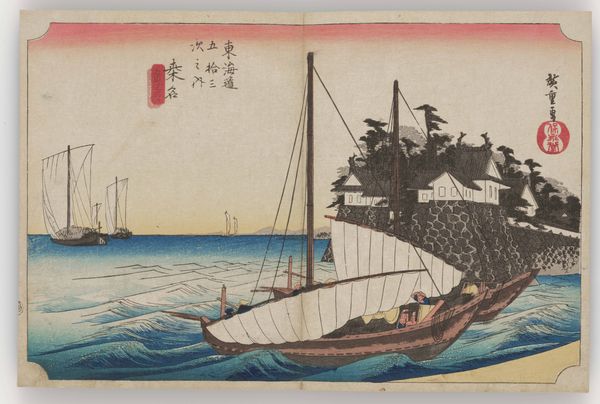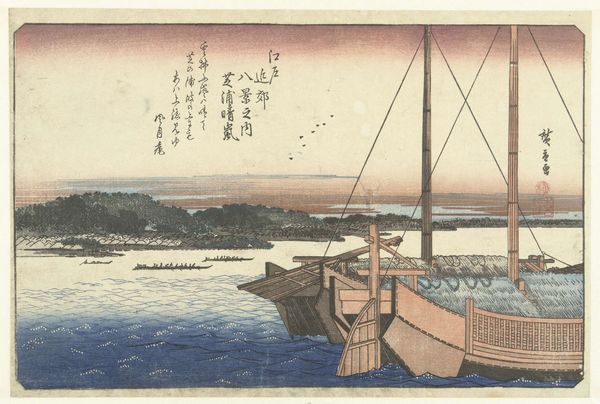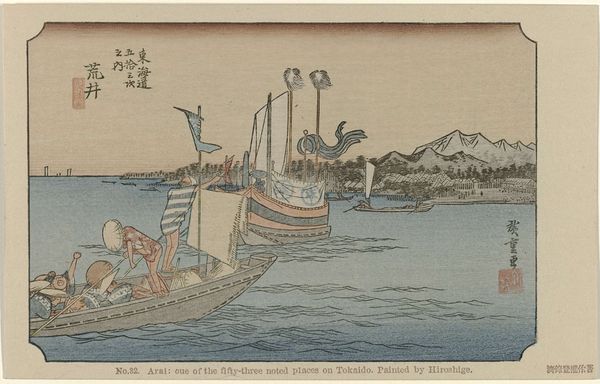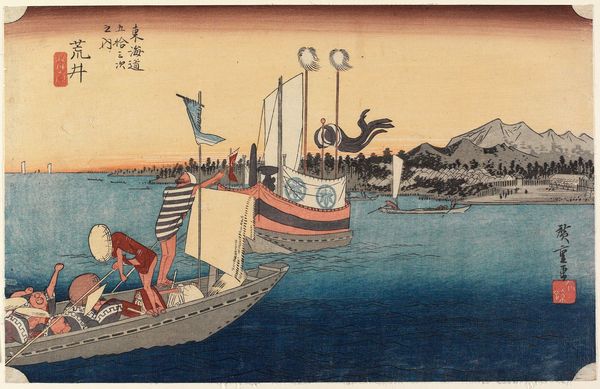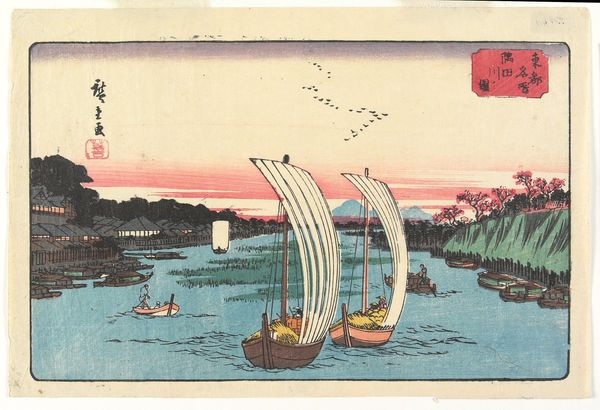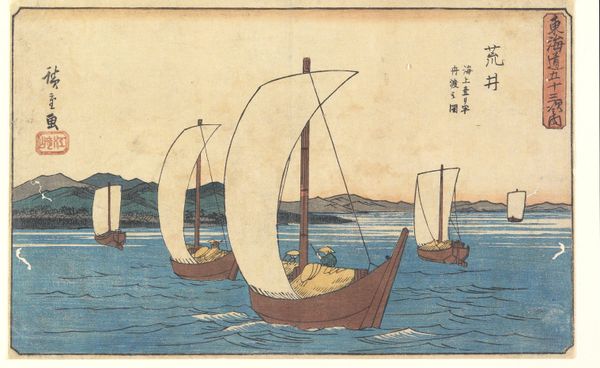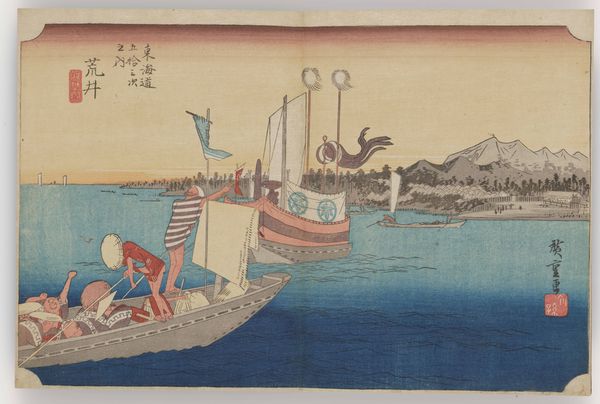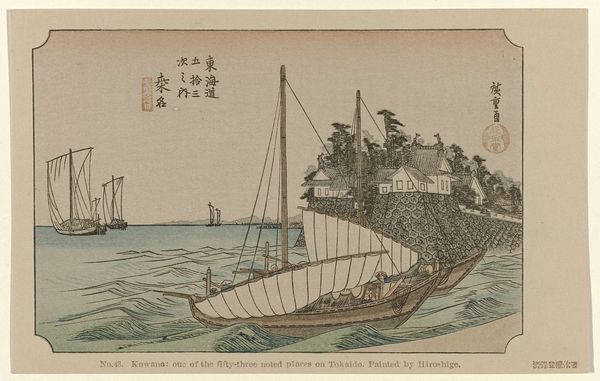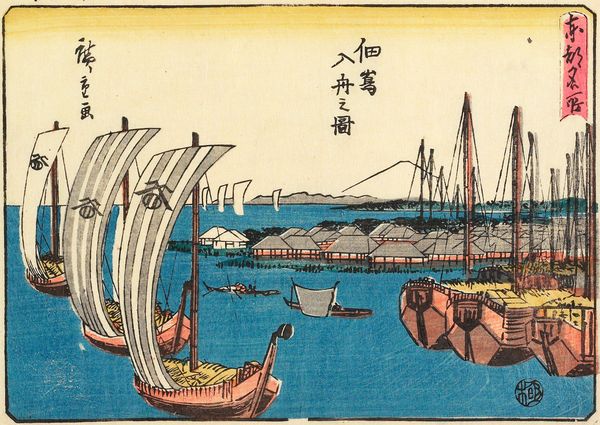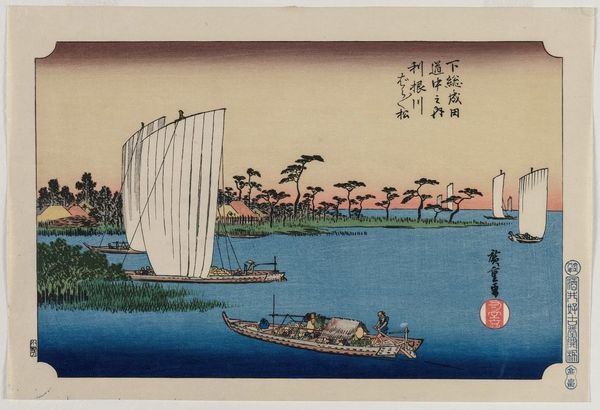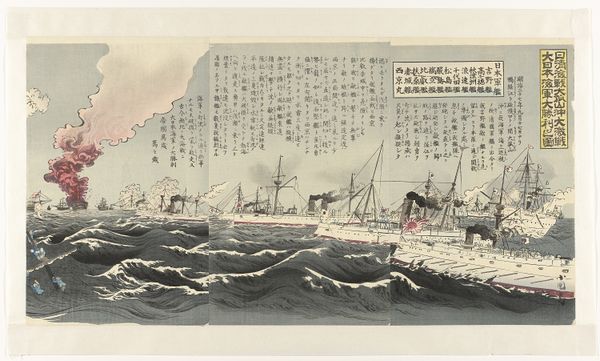
print, etching, ink, woodblock-print
#
narrative-art
# print
#
etching
#
asian-art
#
landscape
#
ukiyo-e
#
japan
#
ink
#
coloured pencil
#
woodblock-print
#
geometric
#
orientalism
#
cityscape
Dimensions: 9 13/16 × 14 7/8 in. (25 × 37.8 cm) (sheet, horizontal ōban)
Copyright: Public Domain
Curator: What strikes me first about this print is the incredible attention to line—the rhythmic waves, the stark geometry of the buildings ashore… It's masterful. Editor: Indeed! This work, titled "Kuwana," was created by Utagawa Hiroshige around 1832 or 1833. As a woodblock print, we see a confluence of labor and craft here. The artist’s design had to be meticulously transferred onto wood, carved, and then printed, often by teams of artisans. Each color likely involved a separate block. Curator: Knowing it's a woodblock enriches the experience—recognizing that each element, from the sky gradient to the textured hillside, required such physical dedication. It feels almost…collaborative in its production. What I find striking, though, is that the subject matter belies the intense work involved. The image itself is tranquil. Editor: Precisely! It depicts Kuwana, a port town along the Tōkaidō Road, one of the most important routes connecting Edo, present-day Tokyo, to Kyoto. Consider this print not just as landscape, but as a form of documentation of place, integral to Japan's internal economy, the labor of which would require considerable resources in terms of timber and the workers who facilitate transportation to and from this region. Hiroshige captures the serenity of maritime travel even amidst bustling trade routes, even given all the materials that facilitated such trading. The boats appear serene on the cusp of both freedom and commerce. Curator: Thinking about the consumption of these prints, they would have been relatively affordable compared to paintings, opening up art ownership to a broader demographic. That itself reshapes our understanding of "high art" versus something more accessible. Editor: Yes, mass production is baked into this print’s origin. It broadens the impact that any image can create. The way that this print also blends the boundaries between art, craft, and documentation gives me hope that there is not much difference at all. Curator: Absolutely. Examining the process provides so many interesting angles on the finished product, helping me look beyond just aesthetics to consider production and meaning. Editor: And recognizing the cultural contexts reveals a broader narrative beyond the serene surface, urging us to think critically about whose stories are being told and how—so art gives voice, beyond what it literally illustrates.
Comments
No comments
Be the first to comment and join the conversation on the ultimate creative platform.

